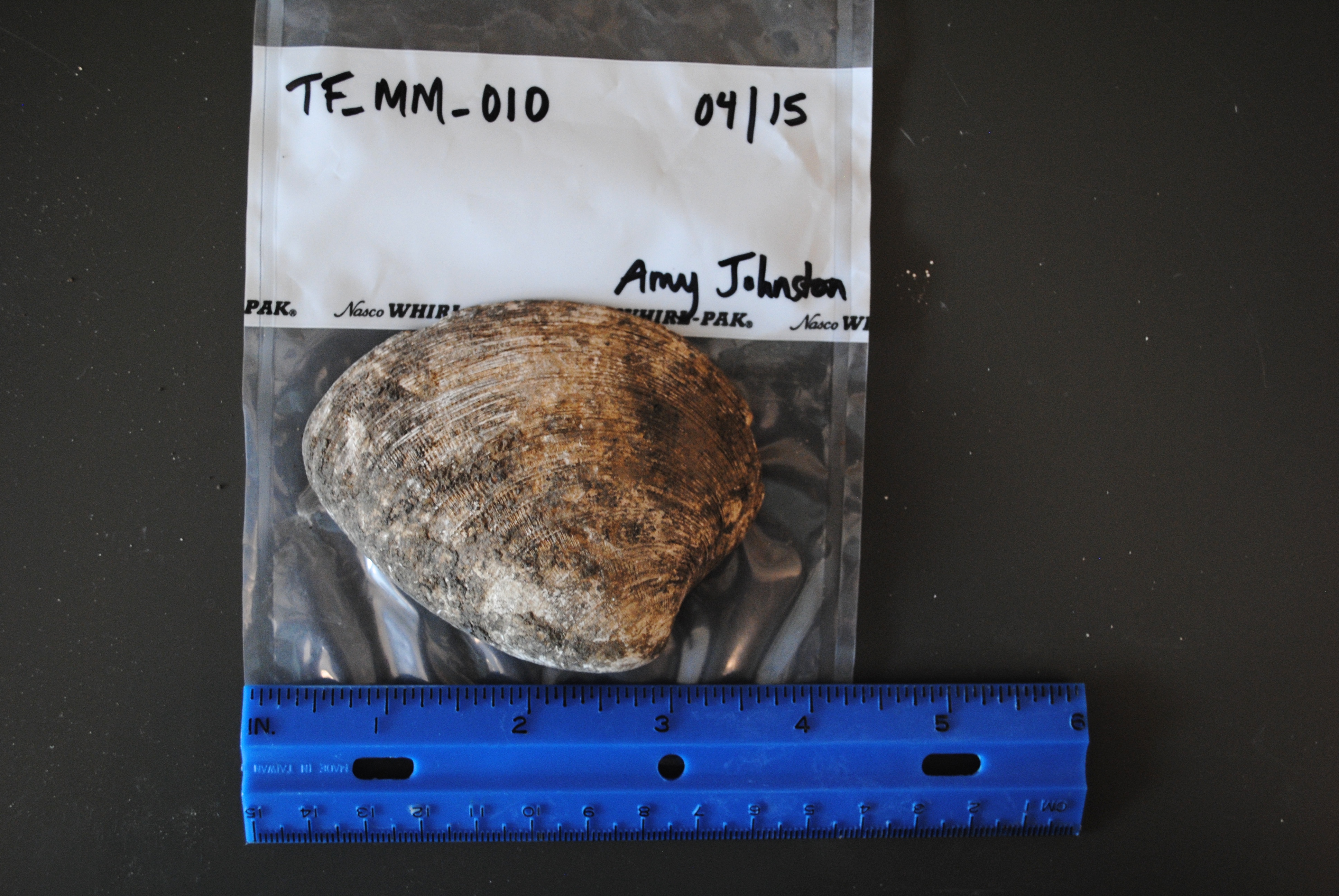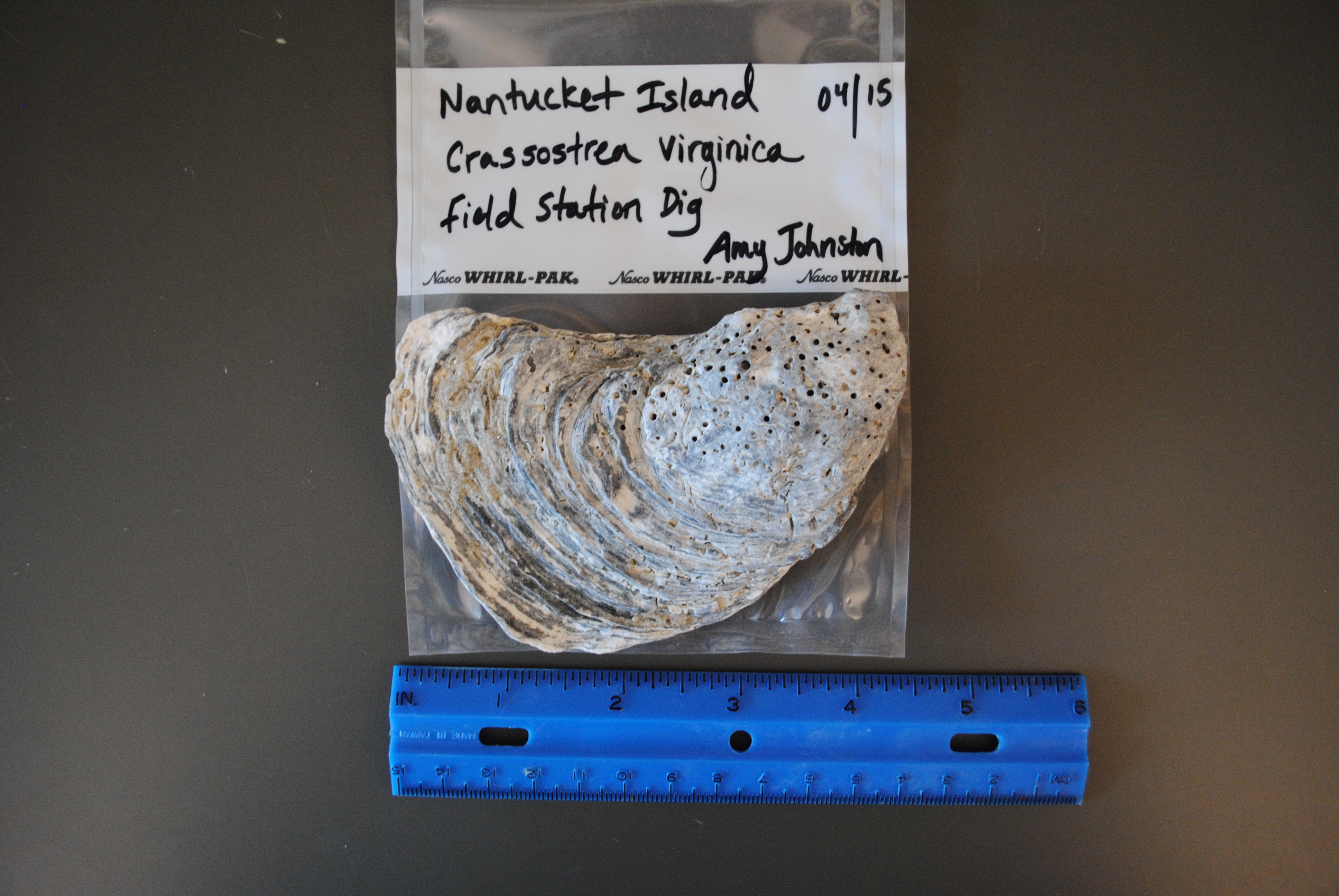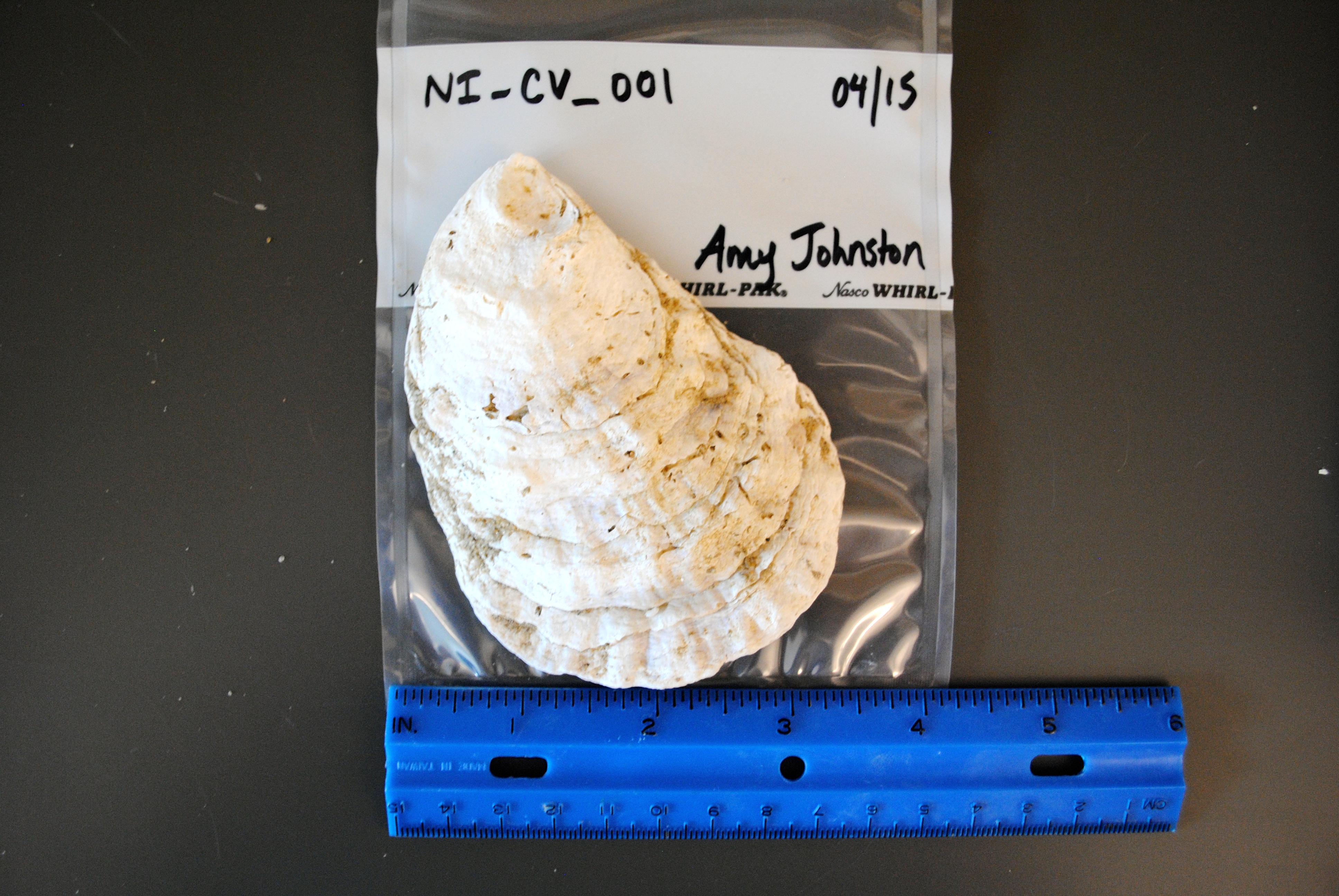About This Project
My research will focus on archaeological data from sites on the coast of Maine and on Nantucket Island, Massachusetts. By examining the composition of shells, I hope to discover how variations in stable isotopic and trace elemental composition in the archaeological shells can be used to reconstruct the past environmental conditions of the Gulf of Maine.
Ask the Scientists
Join The DiscussionWhat is the context of this research?
Mollusk shells are reliable archives of past environments because the organisms incorporate elements into their shell in different amounts and/or ratios depending on specific conditions. These shells are well preserved in the archaeological record and we can use the chemistry of the shells as a proxy for past environmental conditions to link changes in human culture to changes in climate. For example, the stable isotopic composition of oxygen in the calcium carbonate mineral (δ18O) can be used as a temperature proxy, recording changes in ocean temperature during an organism's lifetime.
What is the significance of this project?
Geochemical proxies for past climate conditions can be used to provide important information about a region's past environmental history. By linking these proxies to archaeological data it will be possible to evaluate the longer-term interactions between humans and natural resources in the Gulf of Maine, a region currently faced with significant changes in shellfish population distributions due to climate warming and ocean acidification. Given the significant economic value of these species, understanding the longer-term trends in shellfish population distributions recorded in the middens will provide useful data for the management of these species under future climate change scenarios.
What are the goals of the project?
My first goal is to utilize the samples of shells from Maine and Nantucket to analyze their trace elemental composition using a Laser Ablation Inductively Coupled Plasma Mass Spectrometer. I will also analyze the stable isotopic composition of these shells using a Gas Bench Isotope Ratio Mass Spectrometer. I aim to reconstruct the recent Holocene climate of the Gulf of Maine using the data from stable isotopic and elemental composition analysis. My final goal is to link the geochemical data to archeological findings as a means of understanding the long-term interactions between humans and the natural resources in the Gulf of Maine.
Budget
The budget will help to fund the laboratory preparation and one part of the analysis of the archaeological shell samples. The lab analyses planned are integral to this research project but require using an expensive instrument, the Laser Ablation Inductively Coupled Plasma Mass Spectrometer (LA-ICP-MS). This instrument will measure the different amounts of trace elements in the shells. Your funding will aid with the cost of this analysis in our lab at UMass Boston and help me to prepare and run my shell samples.
Meet the Team
Team Bio
Hello everyone, I am a graduate student at the University of Massachusetts, Boston in the School for the Environment. I have always loved how environmental science has allowed me to explore multiple disciplines and investigate new areas of research. As a geochemist and archaeologist, it is my job to understand what the environment was like long ago in context with past cultures and relate that to modern day environmental conditions. Knowing what the climate was doing in the past is one way we can contextualize what we are seeing today and predict what might happen in the future. I love my research and am very excited about combining paleoclimate analysis with archaeological research to study the Gulf of Maine. In my time away from graduate research, I enjoy swimming, running, and photographing the great outdoors.
Amy Johnston
My name is Amy Johnston and I am a graduate student living in the city of Boston. I am originally from the great state of Maine and have always loved exploring and studying the outdoors. I am very interested in how environmental science has allowed me to explore multiple disciplines and investigate new areas of research. Focusing as a geochemist and archaeologist, it is my job to understand what the environment was like long ago in context with past cultures and relate that to modern day environmental conditions. I love my research and am very excited about combining paleoclimate analysis with archaeological research to study the Gulf of Maine.
I completed my undergraduate degree at Bates College in Biology with a minor in Anthropology/Archaeology and a concentration in Field and Natural Sciences. I am currently pursuing my M.S. in Environmental Science in the School for the Environment from the University of Massachusetts Boston. In my time away from graduate research, I enjoy swimming, running, and photographing the great outdoors. I hope to one day be back living in Maine and helping study and preserve the great outdoor areas and waters the state has to offer!
Additional Information


Images of archaeological clam shells from the Turner Farm Site located on the island of North Haven in Maine.

Images of archaeological oyster shells from exposed archaeological middens on Nantucket Island, Massachusetts.
Project Backers
- 21Backers
- 100%Funded
- $2,009Total Donations
- $70.19Average Donation

